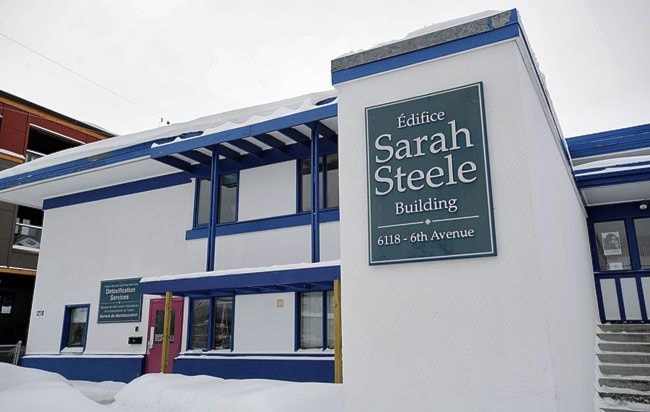The Yukon government has promised a facility for treating youth who struggle with alcohol and drug addictions.
The treatment centre will be part of a new complex set to replace the current Sarah Steele building.
The new building will be a considerable upgrade from what we have now, said Health Minister Doug Graham.
Sarah Steele, which is not much larger than a standard Copper Ridge home, currently houses an inpatient detox centre, counseling services and the offices for the government’s alcohol and drug services unit.
Until recently it also served as an emergency youth shelter.
Almost a year ago, the government added medically assisted detoxification, meaning that nurses would be on hand to deal with the acute physical symptoms of alcohol withdrawal.
That service is “being accommodated in the current building, but it’s not optimal,” said Graham. “We have to improve that space.”
Andy Nieman, the territory’s child and youth advocate, recently called on the government to offer mental health and addictions treatment for children and youth.
Although details are few, the government has now committed that there will be a dedicated youth additions facility included in the new building.
That’s not exactly what he was looking for, said Nieman.
The priority for him is a mental health diagnostic and treatment centre, he said.
“Scientific research proves that early intervention to diagnose and treat mental health in children really is the key to helping them go on to be productive members of society.”
By addressing mental health issues early, the government could avoid having to deal with addictions issues down the road, said Nieman.
Young people struggling with mental health often turn to alcohol and drugs as a way of self-medicating when the root cause is left untreated, he said.
While Nieman is happy that the government has responded so quickly, he hopes that the new facility will offer the kinds of treatment that will produce the best results for young people, he said.
The mental health services unit is far too big to fold into the new facility in its entirety, said Graham.
However, the government has not ruled out the possibility that mental health counseling might be offered alongside addictions treatment in the new youth facility, he said.
“We recognize that there is a link between addictions and mental health, and we recognize many of the people with addictions also have mental health difficulties or mental health problems. So we want to be able to deal with them at the same time.”
The government’s promise to build a youth addictions centre has been a long time coming, said Vicki Durrant, executive director of the Youth of Today Society.
“I think it’s about time,” she said.
The society has been calling for an addictions facility for youth since it started up 14 years ago, she said.
The calls intensified in 2011 when 22-year-old Christopher Putnam took his own life. He had struggled with substance abuse for seven years.
College student Hailey Jager started a petition in his name calling for in-patient addictions treatment for youth in the Yukon. It attracted around 600 signatures.
But Durrant worries that the new centre won’t be all that it could be if the government doesn’t consult with front-line workers and the youth themselves, she said.
“Government has a way of implementing things that don’t work.”
Despite working with the territory’s most troubled youth for 14 years, this announcement came as a surprise to the society, said Durrant.
She wasn’t consulted on the new youth shelter that recently opened, either, she said. There should be more transparency about what kind of service people’s tax dollars are funding, said Durrant.
The society had been pushing for an assisted living facility for youth for years.
It hoped the centre would look less like a shelter and more like a home. Kids would not be kicked out during the day, and staff would act as mentors and caregivers.
But the government balked at funding the project, after expressing doubts about the society’s ability to properly run such a facility.
Durrant is glad that the government has promised to finally act on a youth addiction centre, and hopes they will gather the necessary information to ensure that it is done in the right way, she said.
The current detox centre at Sarah Steele offers a 28-day inpatient treatment program to adults age 25 and up.
Critics have said that transitional housing needs to be offered to people exiting the program so that don’t simply return to their old lives after treatment.
Changes to the new facility will ensure that it works better for the clients, said Graham.
For one, instead of offering the program during set blocks of time over the course of the year, patients will be able to begin treatment when they need it.
“Patients will be able to drop in when they’re ready instead of when we’re ready,” said Graham.
Also, the government is working with the Salvation Army to offer transitional housing for patients leaving detox, he said.
This service will be separate from the replacement for the Sarah Steele building and from the existing Salvation Army facilities.
Graham will take the proposal for the new drug and alcohol treatment centre to cabinet in the next few weeks, he said.
Plans for the new facility should be in place before the end of the year.
The building is still in its conceptual stage, and the cost could be anywhere from $10 million to $18 million, said Graham.
“Any price that I give you would be a guesstimate.”
Contact Jacqueline Ronson at
jronson@yukon-news.com
